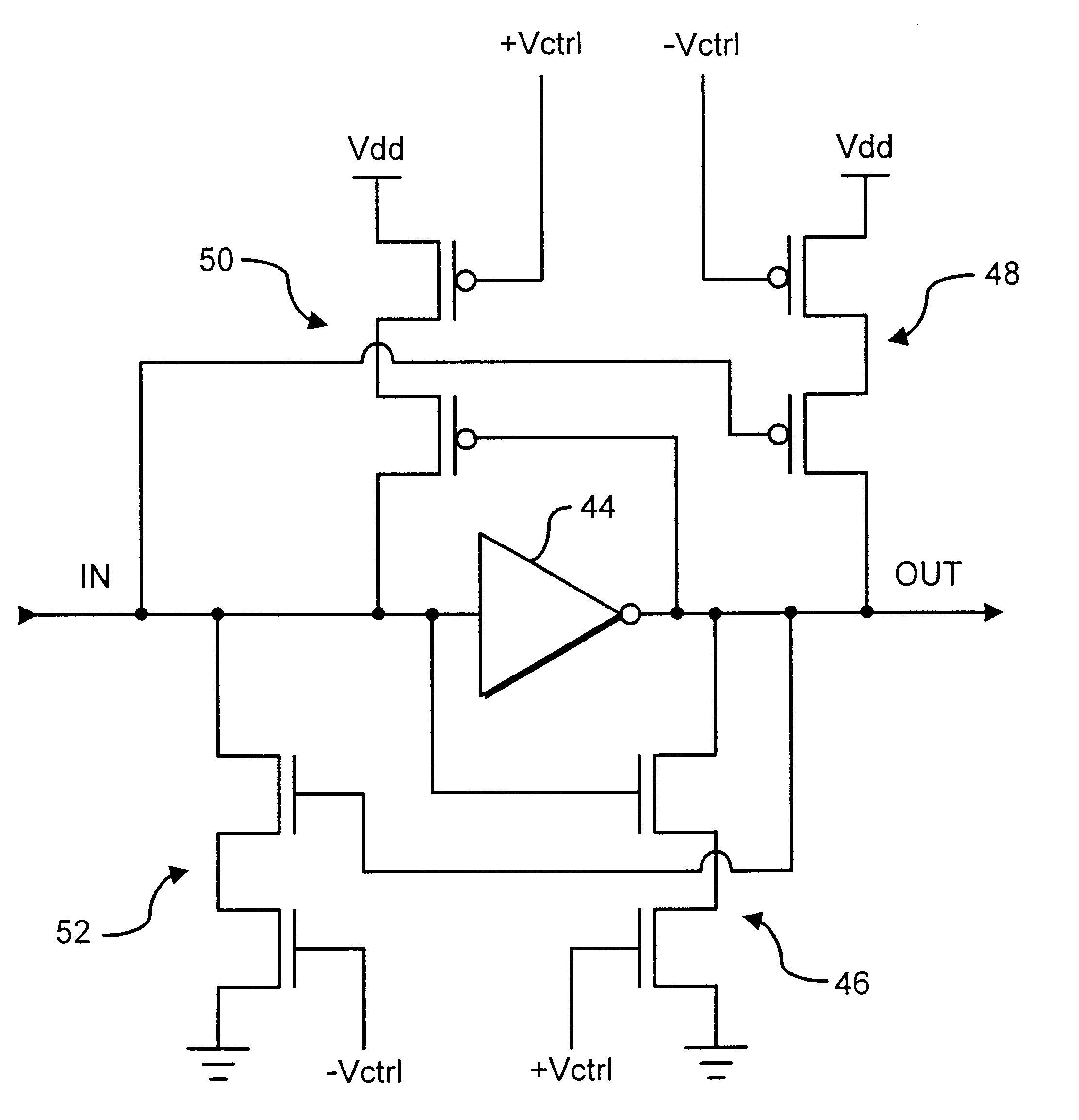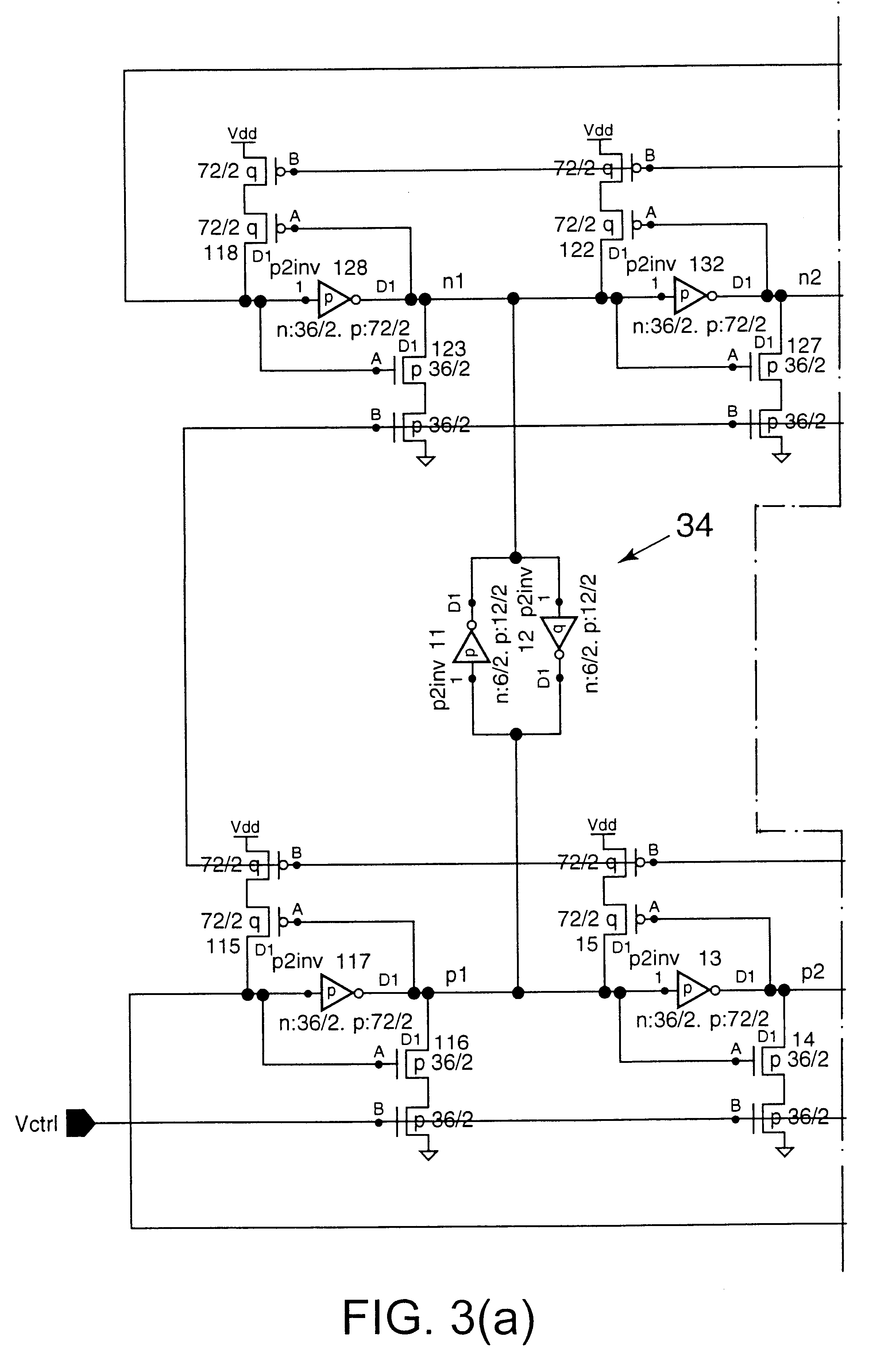Voltage controlled oscillator with accelerating and decelerating circuits
a voltage control and oscillator technology, applied in the direction of logic circuits, multiple-port active networks, electric pulse generators, etc., can solve the problems of increasing the difficulty of providing noise and jitter free clock signals, differential control voltage systems are more complex to design and fine tune than single-ended systems, and differential systems tend to consume more power
- Summary
- Abstract
- Description
- Claims
- Application Information
AI Technical Summary
Benefits of technology
Problems solved by technology
Method used
Image
Examples
Embodiment Construction
FIG. 1 schematically illustrates a ring oscillator 2 having five oscillator stages 4, 6, 8, 10 and 12. The oscillator stages 4, 6, 8, 10 and 12 are arranged in a ring with the output of oscillator stage 12 being coupled to the input of oscillator stage 4. In this example each oscillator stage 4, 6, 8, 10 and 12 acts as an invertor serving to invert the signal presented to its input to generate its output. If the input to an oscillator stage 4, 6, 8, 10 and 12 changes, then the oscillator stage output signal will also change after a propagation delay time that is characteristic of the oscillator stage. Since the ring oscillator 2 has an odd number of oscillator stages 4, 6, 8, 10 and 12 with each stage being an invertor, there is no stable static set of oscillator stage output signals and instead a change of signal circulates around the ring oscillator 2. At the instant illustrated in FIG. 1, the input signal to oscillator stage 8 can be considered to have just changed to become a "1...
PUM
 Login to View More
Login to View More Abstract
Description
Claims
Application Information
 Login to View More
Login to View More - R&D
- Intellectual Property
- Life Sciences
- Materials
- Tech Scout
- Unparalleled Data Quality
- Higher Quality Content
- 60% Fewer Hallucinations
Browse by: Latest US Patents, China's latest patents, Technical Efficacy Thesaurus, Application Domain, Technology Topic, Popular Technical Reports.
© 2025 PatSnap. All rights reserved.Legal|Privacy policy|Modern Slavery Act Transparency Statement|Sitemap|About US| Contact US: help@patsnap.com



